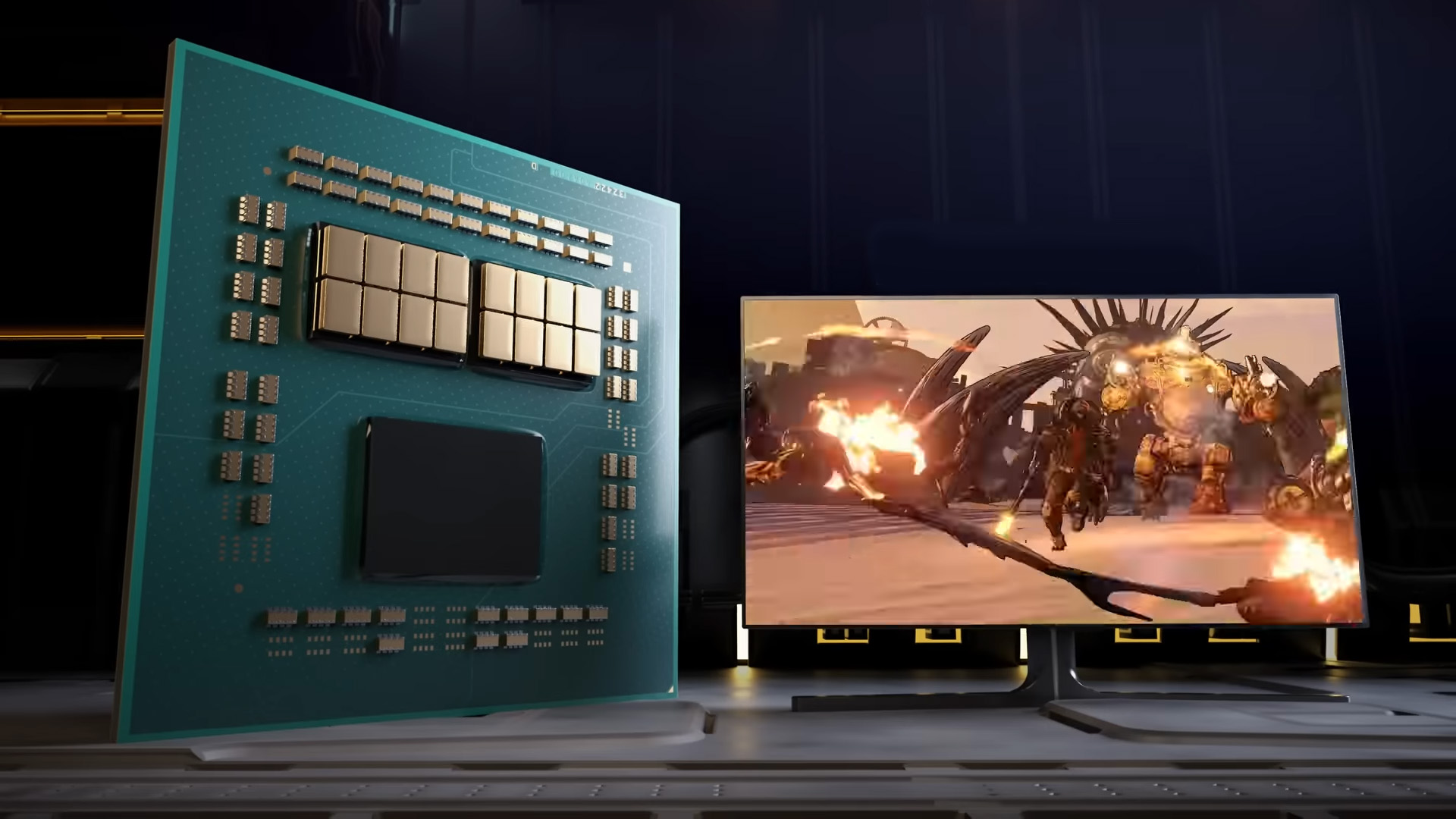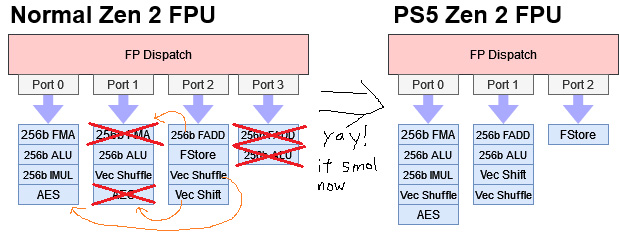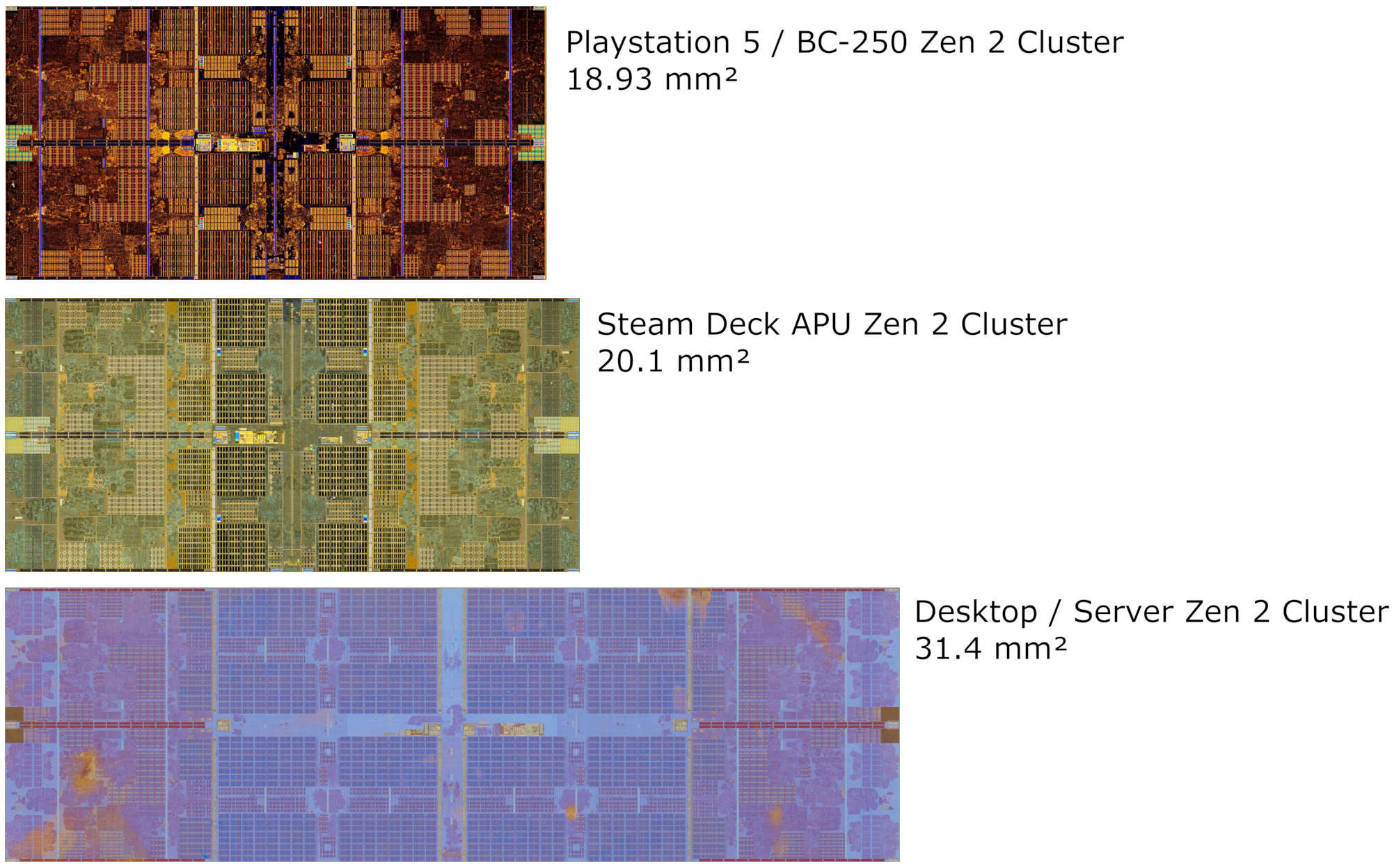Chips and Cheese acquireda Zen 2 CPU used inSony’sPlayStation 5and went to town studying differences compared to AMD’s Ryzen-branded products sporting the same CPU architecture (like theRyzen 3000 series). The chip review outlet found that Sony’s custom-designedZen 2chip sports a heavily cut-down FPU that’s shrunk by 35%. However, Chips and Cheese discovered these changes don’t impact gaming performance making it the “perfect"gaming CPU.
The area AMD paid the most attention to when designing Sony’s custom Zen 2 PlayStation 5 CPU was the FPU, or floating point unit. AMD cut down the number of floating point pipes and eliminated some of the FP/vector execution units. Compared to a comparable Zen 2 Ryzen CPU desktop chip like theRyzen 7 3700Xor3800X, Sony’s custom Zen 2 chip comes with only half of the FPU capabilities of a 3700X or 3800X.

To do this, AMD added more functionality to the remaining floating-point ports. In a traditional Zen 2 chip, there are four ports, with most of the ports handling duplicate instructions. But with the PS5 CPU, all of the duplicates have been deleted with the fourth port being deleted entirely. Port 0 and 1 handle all of the instructions while port 2 only handles FStore.
AMD also shrank the register file to improve size efficiency. The amount of blocks the register file has is the same as AMD’s Ryzen 3000 chips, but each block size is smaller. Chips and Cheese believes this was a design change made in conjunction with the FPU port count reduction apparently because the performance impact of a smaller register file size is directly correlated with the FPU’s capabilities.

Chips and Cheese found that these changes did not make any difference in terms of gaming performance. In a test withCall of Duty: Black Ops - Cold War Zombies, the chip review outlet monitored the FPU execution units and found that none of the EUs were taxed beyond 20-22%. The onlybenchmarkswhere the FPU nerfs compromised performance were in heavy productivity/synthetic tests such as Y-Cruncher. But even in Y-Cruncher performance only dropped by 16% (compared to a normal Zen 2 chip) despite having effectively half of the FPU execution pipeline of a traditional Zen 2 CPU.
With these changes, AMD was able to reduce Sony’s PS5 Zen 2 FPU size by a whopping 35% while offering identical gaming performance as Zen 2 chips (at identical clock speeds and memory speeds that is). It’s an excellent representation of AMD being able to custom-design chips specifically for its customers. Though interestingly these specific changes have only been done to Sony’s PS5 CPU, and no other custom chips AMD makes currently (including theSteam Deck’sVan Gough APU).

This design appears to be working great for Sony. Leaked specifications of thePlayStation 5 Prosuggest that Sony will keep using this same Zen 2 chip, but with a dual-mode performance mode that allows developers to clock the CPU to 3.85 GHz if necessary.
Get Tom’s Hardware’s best news and in-depth reviews, straight to your inbox.

Aaron Klotz is a contributing writer for Tom’s Hardware, covering news related to computer hardware such as CPUs, and graphics cards.